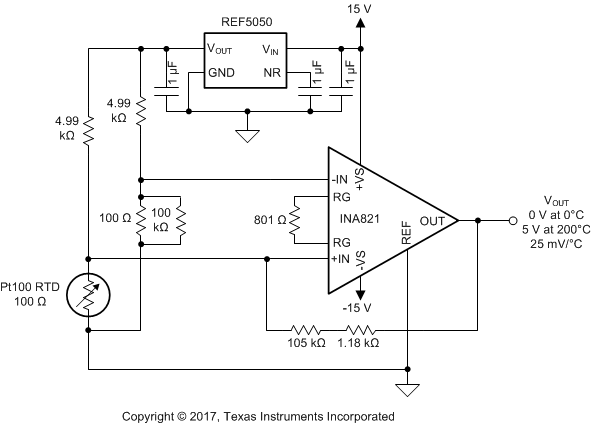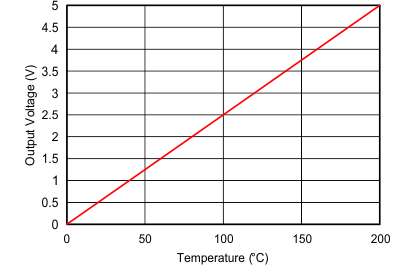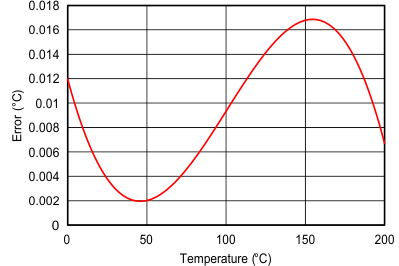SBOS893D August 2018 – June 2020 INA821
PRODUCTION DATA.
- 1 Features
- 2 Applications
- 3 Description
- 4 Revision History
- 5 Device Comparison Table
- 6 Pin Configuration and Functions
- 7 Specifications
- 8 Detailed Description
- 9 Application and Implementation
- 10Power Supply Recommendations
- 11Layout
- 12Device and Documentation Support
- 13Mechanical, Packaging, and Orderable Information
Package Options
Mechanical Data (Package|Pins)
Thermal pad, mechanical data (Package|Pins)
Orderable Information
9.3.1 Resistance Temperature Detector Interface
Figure 72 illustrates a 3-wire interface circuit for resistance temperature detectors (RTDs). The circuit incorporates analog linearization and has an output voltage range from 0 V to 5 V. The linearization technique employed is described in Analog linearization of resistance temperature detectors analog application journal. Series and parallel combinations of standard 1% resistor values are used to achieve less than 0.02°C of error over a 200°C temperature span.
 Figure 72. A 3-Wire Interface for RTDs With Analog Linearization
Figure 72. A 3-Wire Interface for RTDs With Analog Linearization  Figure 73. Transfer Function of 3-Wire RTD Interface
Figure 73. Transfer Function of 3-Wire RTD Interface  Figure 74. Temperature Error Over Full Temperature Range
Figure 74. Temperature Error Over Full Temperature Range